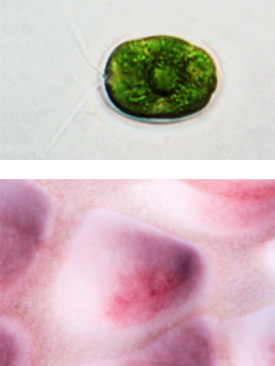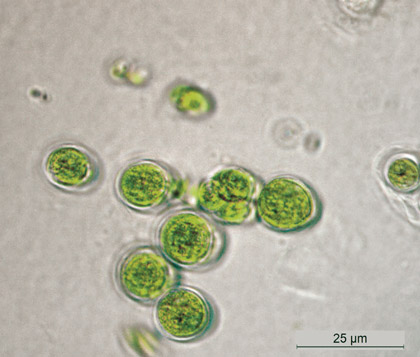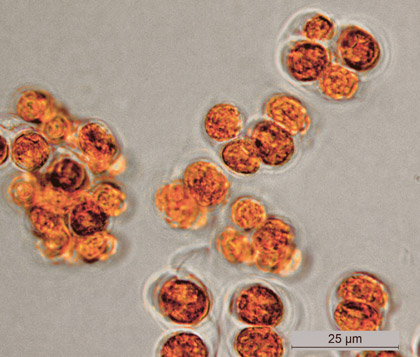
Exploring Snow Algae
Green & Red Life Cycle

Snow algae adapt to their environment by essentially modifying their pigmentation:
In springtime, when temperatures rise above freezing point and levels of nutrients and light increase, snow algae cells that are still covered by a thin blanket of snow appear green as they predominantly contain chlorophyll pigments.
Chlorophyll absorbs energy from the light and converts it into chemical energy that will fuel the activities of the algae. With the help of flagella, green algae move to the surface of the snow layer where they propagate.
Meanwhile, UV light increases considerably during the summer period. As this may damage the sensitive photosynthesis system of the cells, the snow algae start to produce protecting carotenoid pigments that counter this radiation.
As nutrients and energy supply decline, the cells stop their growth phase and turn red. The snow algae enter into a dormant stage where they are protected against the strong summer radiation. And in the wintertime they are again covered by a thick layer of snow. Secondary metabolites such as antifreeze glycoproteins, stress modifiers and osmotically active amino acids and sugars help algae cells to survive in their cold and harsh environment.

Growth and reproduction stage
- Flagella
- Chlorophyll (photosynthesis Ò energy)

Dormant stage (spores)
- Carotenoids
- Antioxidants
- Polyphenols
- Biopolymers
- Antifreeze glycoproteins (AFGPs)
Osmotically active amino acids and sugars
Ò interesting metabolites